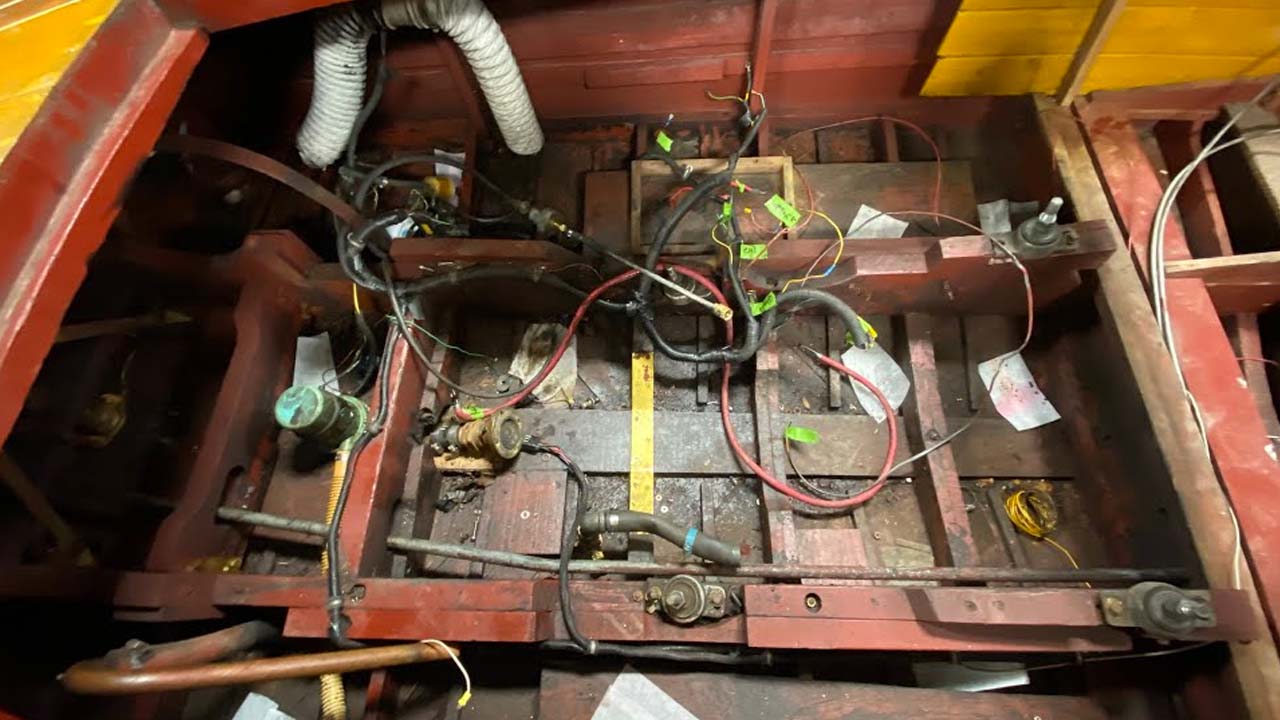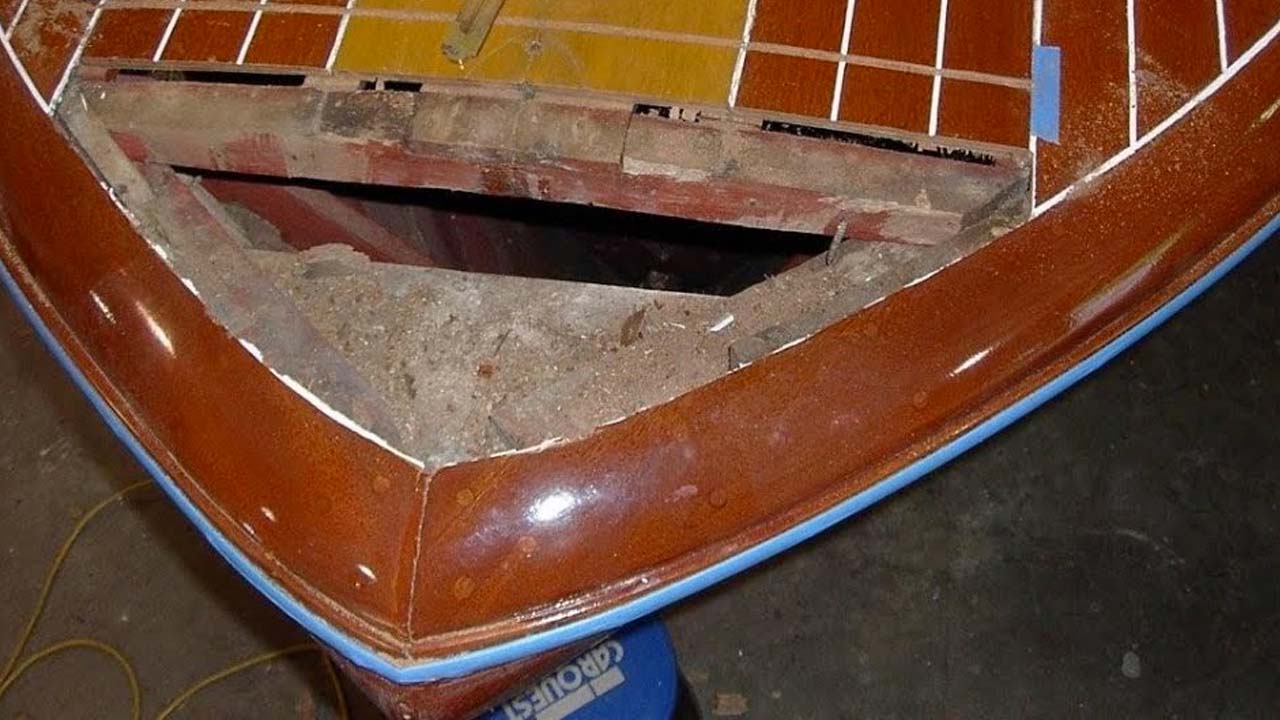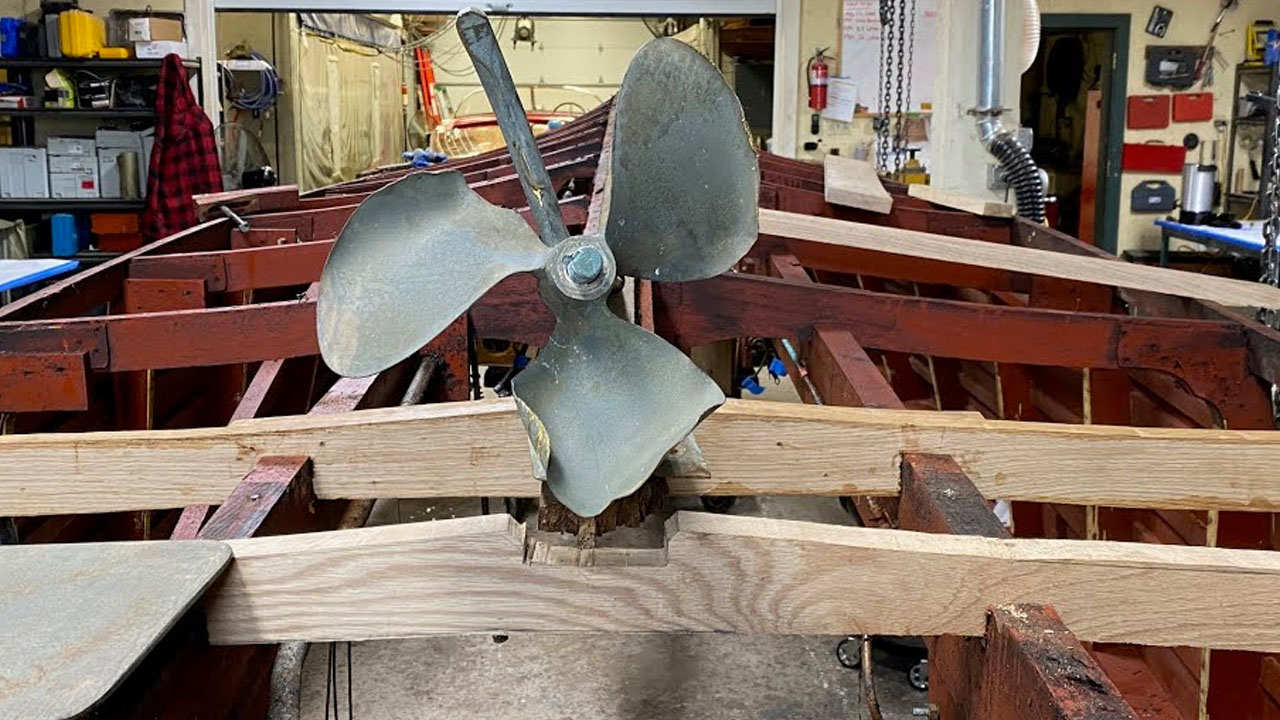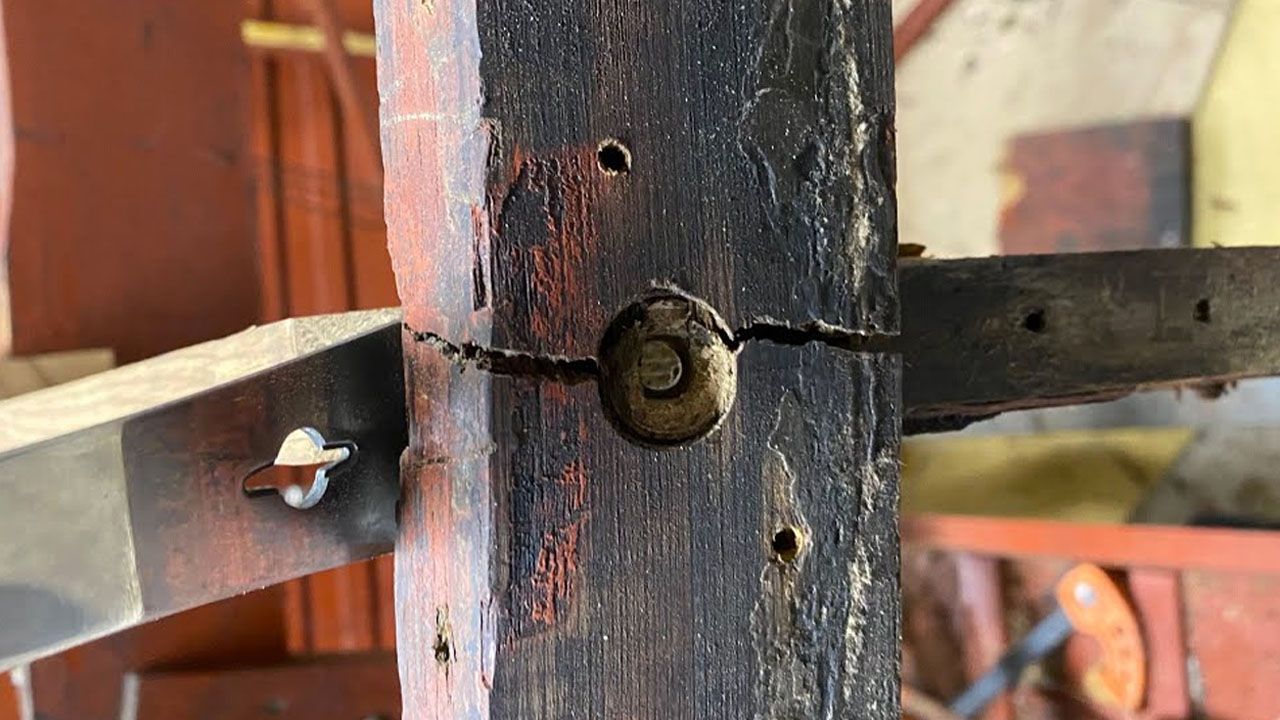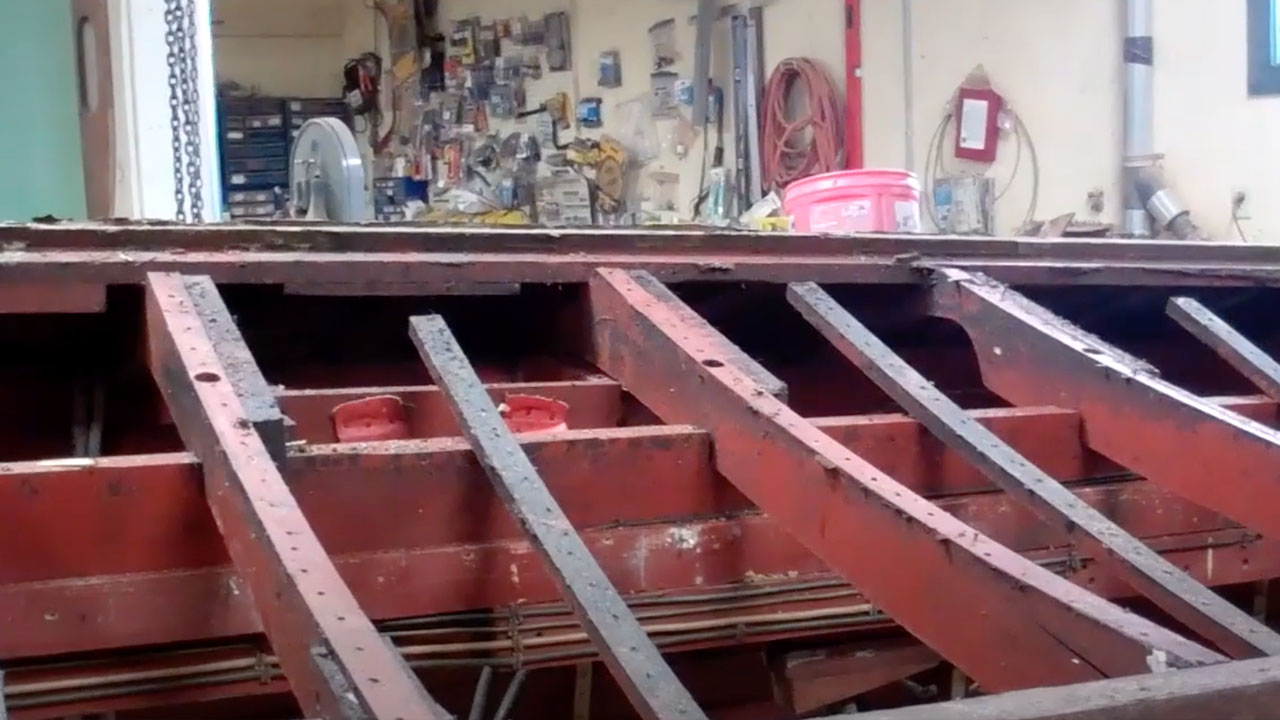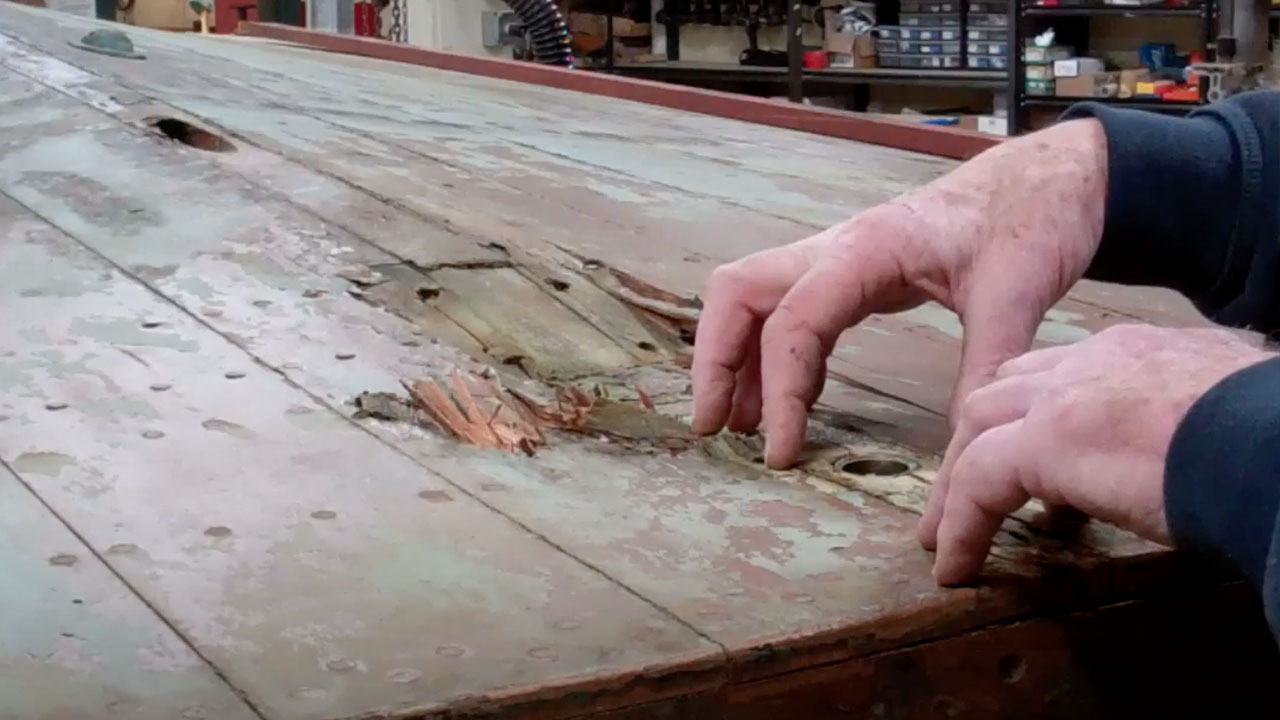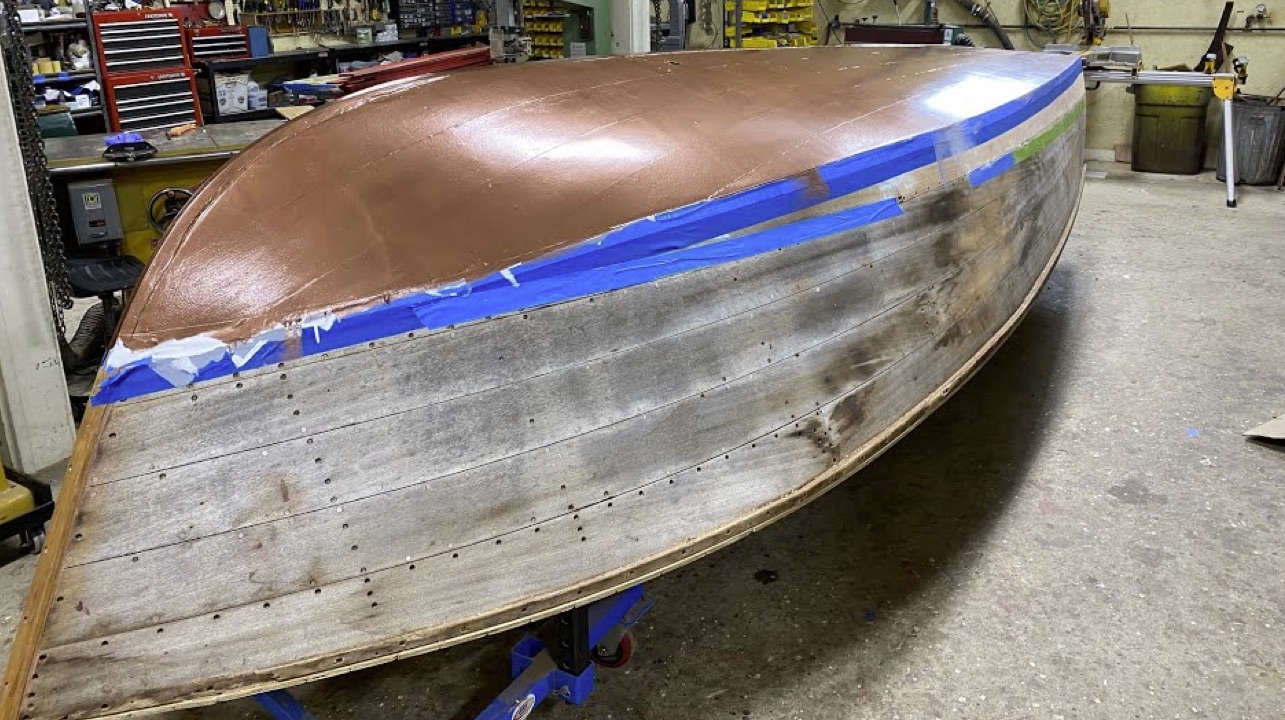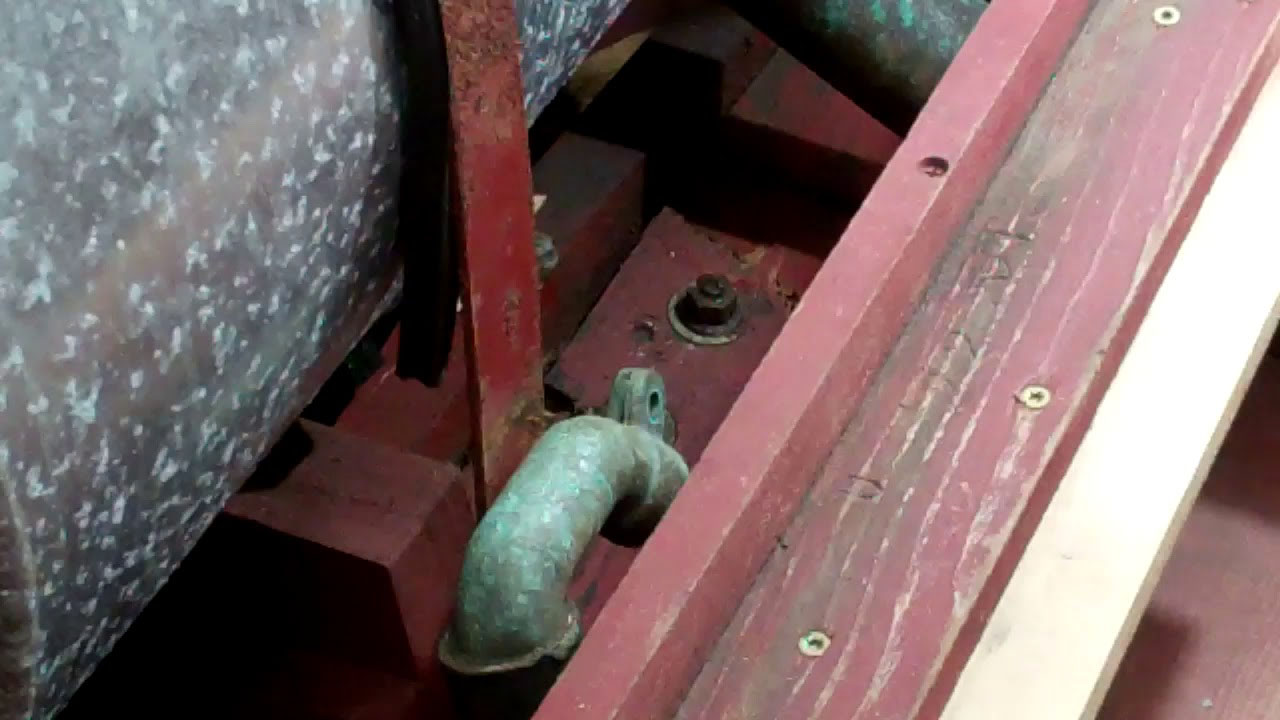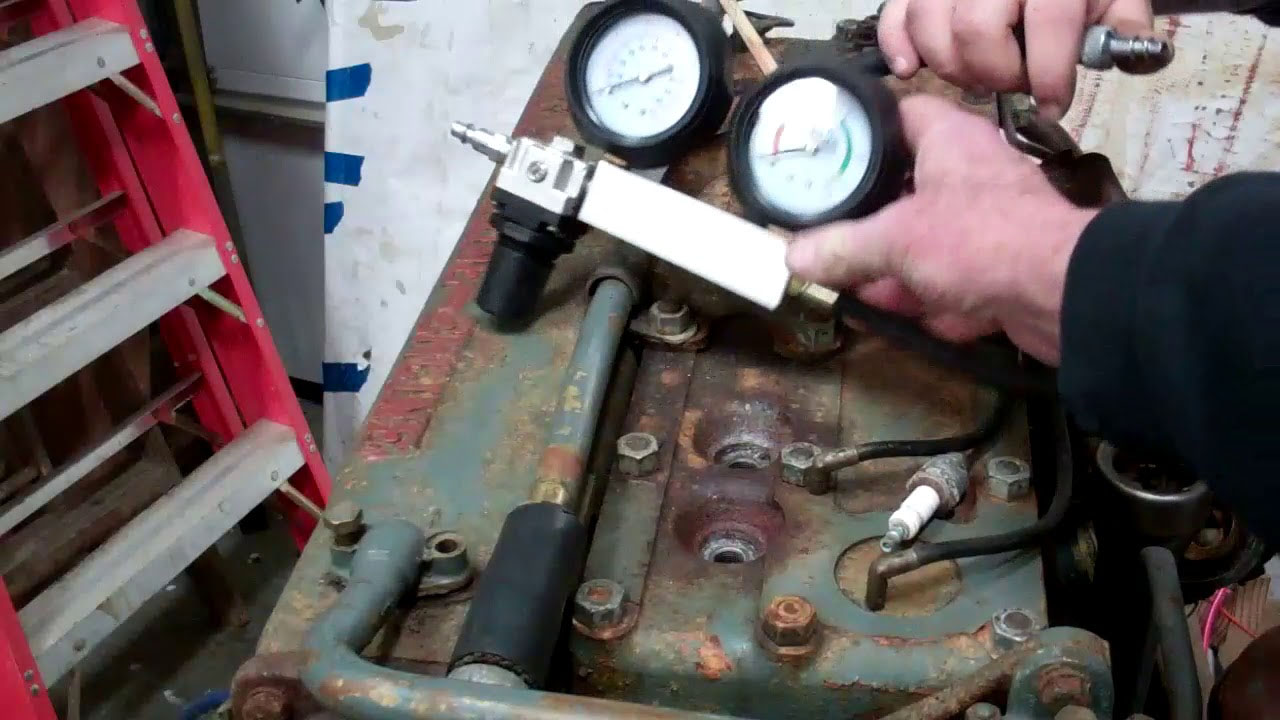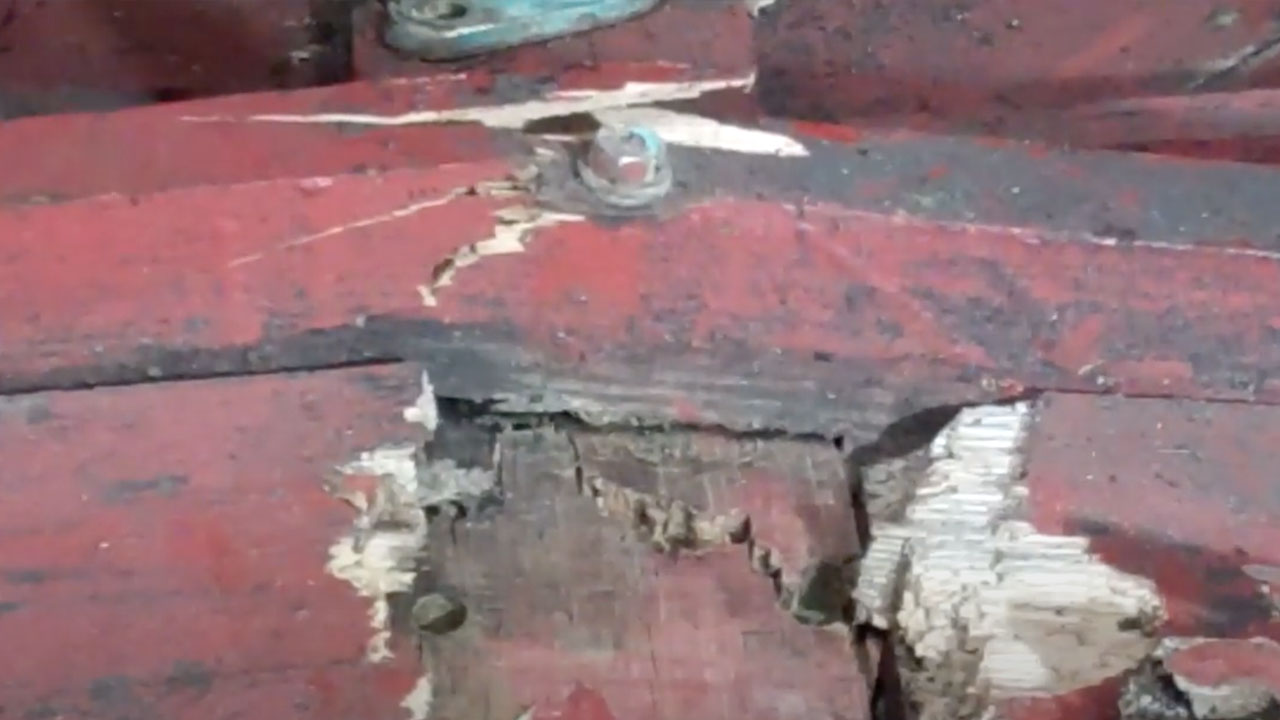The Capri’s engine is out, crated and begins its trek to Peter Henkel, Inc. in Marine City, MI tomorrow.
While her owner reports that the engine has run reliably and strongly for at least a decade, we now know that it has also been losing copious amounts of oil and transmission fluid into the bilge. Indeed, the transmission had very little fluid in it, which probably helps explain the issues her owner has experienced with shifting and staying in gear.
This engine is plumbed in an interesting manner. For example, raw water is drawn in, but first passes through what appears to be a transmission cooler before continuing to the water pump. Perhaps this plumbing is a component of the Moroso kit that was used to marinize what had been an automobile engine.
We will learn much more once Robert Henkel lays hands and eyes on, and goes through the engine. All the fluids that have leaked from the engine and transmission over the years, perhaps decades, found a home in the bilge. The clip gives you a feeling for how much, but we pulled the engine yesterday, only to find several actual pools of oily fluid that has soaked into the wood by this afternoon. I can only guess what we will find once we have cleaned the bilge, flipped the hull and stripped off her bottom paint, especially what is left of it on the keel, garboards and related planks. We agreed with her owner that, if at all possible, we would not begin releasing bottom planking, but if we discover planking that is as oil-soaked as the bilge suggests it is, we will have no alternative. (She appears to retain her original planking, so just plucking off a plank here and there is near impossible. Remember, hundreds of ½’ slot-head screws and that sheet of canvas are lurking beneath the exterior planks.)
The wiring is an absolute nightmare, and dangerous to boot. The engine gets fuel via an electric fuel pump that someone wired directly to the positive side of the coil, which can if the wire is sized sufficiently large so that the pump is supplied with the voltage it needs without over-heating the wire. This boat’s pump is fed current from the coil via a 14 ga wire, which seems at least skimpy to me.
Beyond that, we have found seemingly unconnected masses and rats nests of all sorts of wire, most of which is not AWG, throughout the bilge and especially behind the gauges. (We will do our best to convince her owner that the truly safe course involves stripping all of it out and wiring it again from the get go.)
Since the bilge is oil-adulterated from just ahead of the shaft log through and to beneath the helm station, we must remove the rest of the seating, the bench seat bases and all of the flooring before Anthony and I begin fully enjoying going after all that grease and oil with putty knives, wire brushes and gallons of Roll-Off!

